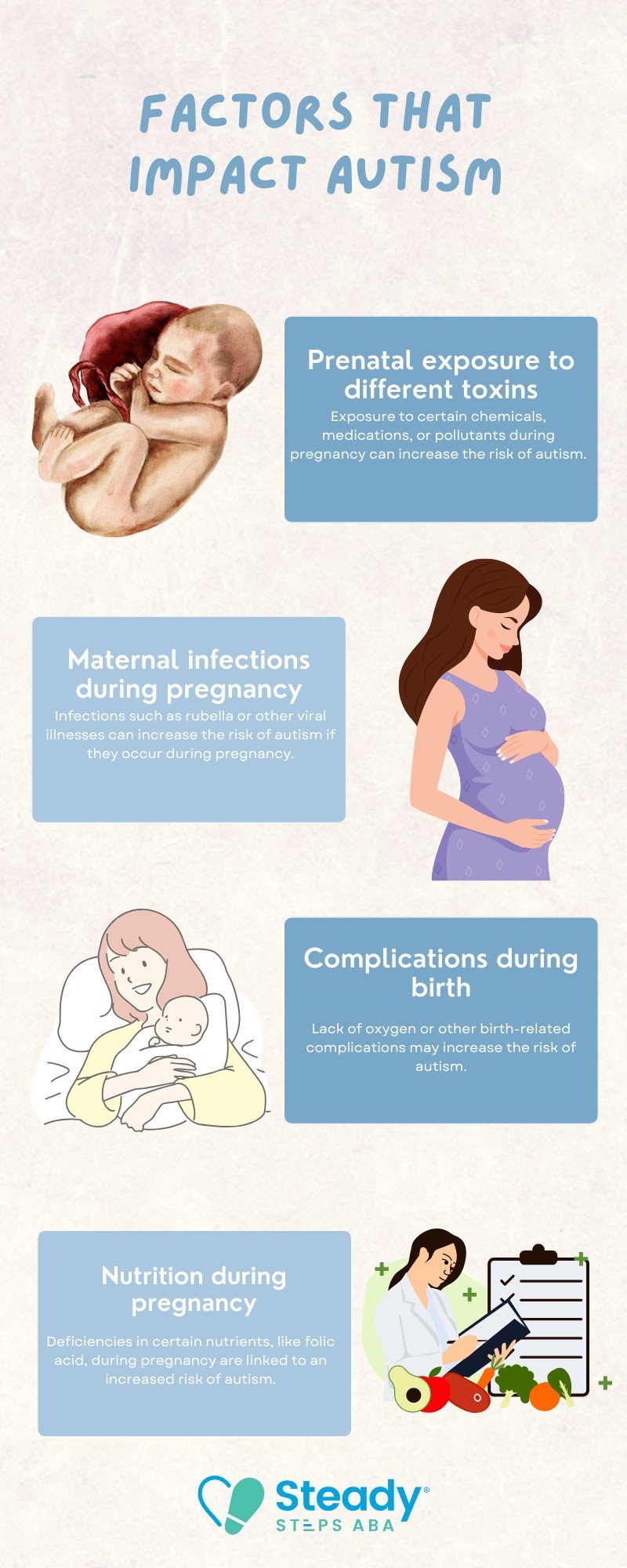Key Points:
- Genetics plays a crucial role in the development of Autism Spectrum Disorder (ASD), but it is not solely determined by one parent.
- Both maternal and paternal genes contribute to the likelihood of a child developing autism.
- Current research suggests that multiple genes are involved in autism and that environmental factors may also play a role in its onset.
When parents learn their child has Autism Spectrum Disorder (ASD), one of the first questions they often ask is, which parent is responsible for autism? It’s natural to want to understand what factors contributed to the diagnosis. Autism is a complex developmental condition, and its causes are not fully understood.
While research indicates that about 80% of autism cases have links to genetics, it’s not a simple matter of one parent being “responsible.” Autism is influenced by a combination of genetic and environmental factors, and both the mother and father contribute to the child’s genetic makeup.
In this article, we’ll dive into the interaction between various genetic factors, along with environmental influences such as age, prenatal health, and family history, that play a crucial role in the development of ASD.
How Does Genetics Influence Autism
Autism has a strong genetic component, but it’s important to understand that the genetic basis of ASD is multi-faceted and complex. The development of autism involves many genes, and different combinations of these genes can interact with environmental factors to increase the risk of developing the condition.
In general, specific genes are more likely to be associated with autism. However, these genes don’t directly cause autism on their own. For example, mutations in certain genes that affect brain development or communication may be passed down from one or both parents.
Furthermore, de novo mutations—those that occur spontaneously in a child rather than being inherited—have been found to be a factor in some cases of autism. This means that a child could inherit a combination of genetic risks from both parents and also experience a new genetic mutation that contributes to the development of autism.
While genetics play a role, environmental factors also influence the risk. Factors such as prenatal exposure to certain drugs, maternal infections, or even advanced parental age can contribute to the likelihood of autism in a child. These factors combined create a unique genetic and environmental picture for each child. To understand how autism symptoms may evolve over time, check out our article on “Do Autism Symptoms Improve With Age?” for more insights.
Which Parent is More Likely to Pass Down Autism?
Though both parents contribute to the risk of autism, some studies suggest that fathers may have a slightly higher likelihood of passing on autism-related genes.
In contrast, the maternal side of the equation also plays a crucial role, especially in relation to the X chromosome. Women have two X chromosomes, and a defect in one can be compensated by the other. However, males only have one X chromosome, which could explain why autism is more common in boys. If a mother carries a genetic mutation on the X chromosome that affects autism, it may be more likely to affect her sons.
Both the father’s and mother’s genetics can influence autism risk, but the presence of certain mutations from either side can increase the chances of a child developing ASD.
Is Autism Hereditary?
While autism is not a direct hereditary condition like some genetic disorders, there is a strong hereditary component. If one child in a family has autism, the likelihood of another child being diagnosed with ASD increases significantly. Studies show that siblings of children with autism are more likely to be diagnosed with ASD, indicating that genetics play a significant role in the risk of autism.
However, it is important to note that while autism runs in families, it does not follow a clear-cut inheritance pattern. For example, a family with a history of autism may still have children with no autism diagnosis. Conversely, a family with no history of autism may have a child with the condition due to genetic mutations or environmental factors.
Environmental Factors and Their Impact on Autism
While genetics are a major factor in the development of autism, environmental factors can also play an important role. Particularly, environmental factors may act as triggers or amplifiers of genetic predisposition, potentially leading to the development of ASD.
Some of the most widely studied environmental factors include:

These environmental factors do not guarantee that a child will develop autism, but they may influence the way that genes are expressed, thus affecting the likelihood of autism.
Can Autism Be Prevented?
Currently, there is no known way to prevent autism. While some factors, such as maternal health during pregnancy, can be managed to reduce the risk, the genetic nature of autism means that it is not entirely preventable. However, early diagnosis and intervention can significantly improve outcomes for children with autism.
The focus is now on early identification and early intervention. Programs such as ABA and occupational therapy have proven to be incredibly effective in helping children with autism develop essential skills and improve their quality of life.
While researchers continue to explore the genetic and environmental factors that contribute to autism, prevention is not yet possible. Instead, supporting children with autism through early intervention is key to helping them thrive.
Give Your Child the Tools for Success with ABA Therapy
If you’re seeking effective support for your child with autism, Steady Steps ABA in Maryland offers personalized ABA therapy services. Applied Behavior Analysis is an evidence-based therapy designed to help children with autism develop communication, social, and life skills.
At Steady Steps ABA, we work closely with families to create individualized treatment plans tailored to the specific needs of each child. Our experienced team provides therapy in a compassionate, supportive environment that helps children build positive behaviors and skills that improve their overall quality of life.
Contact us today to learn more about how ABA therapy can support your child’s development in Maryland.



